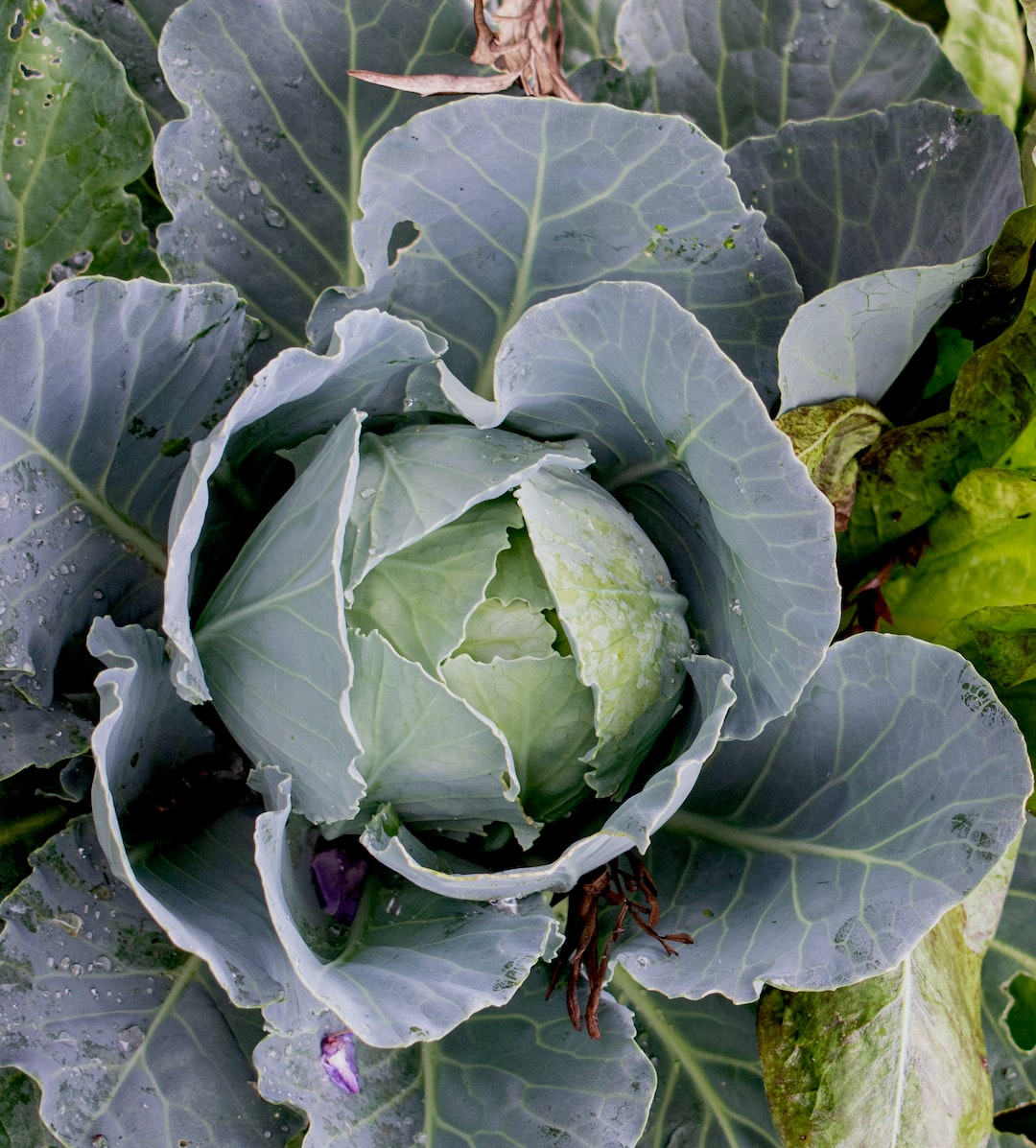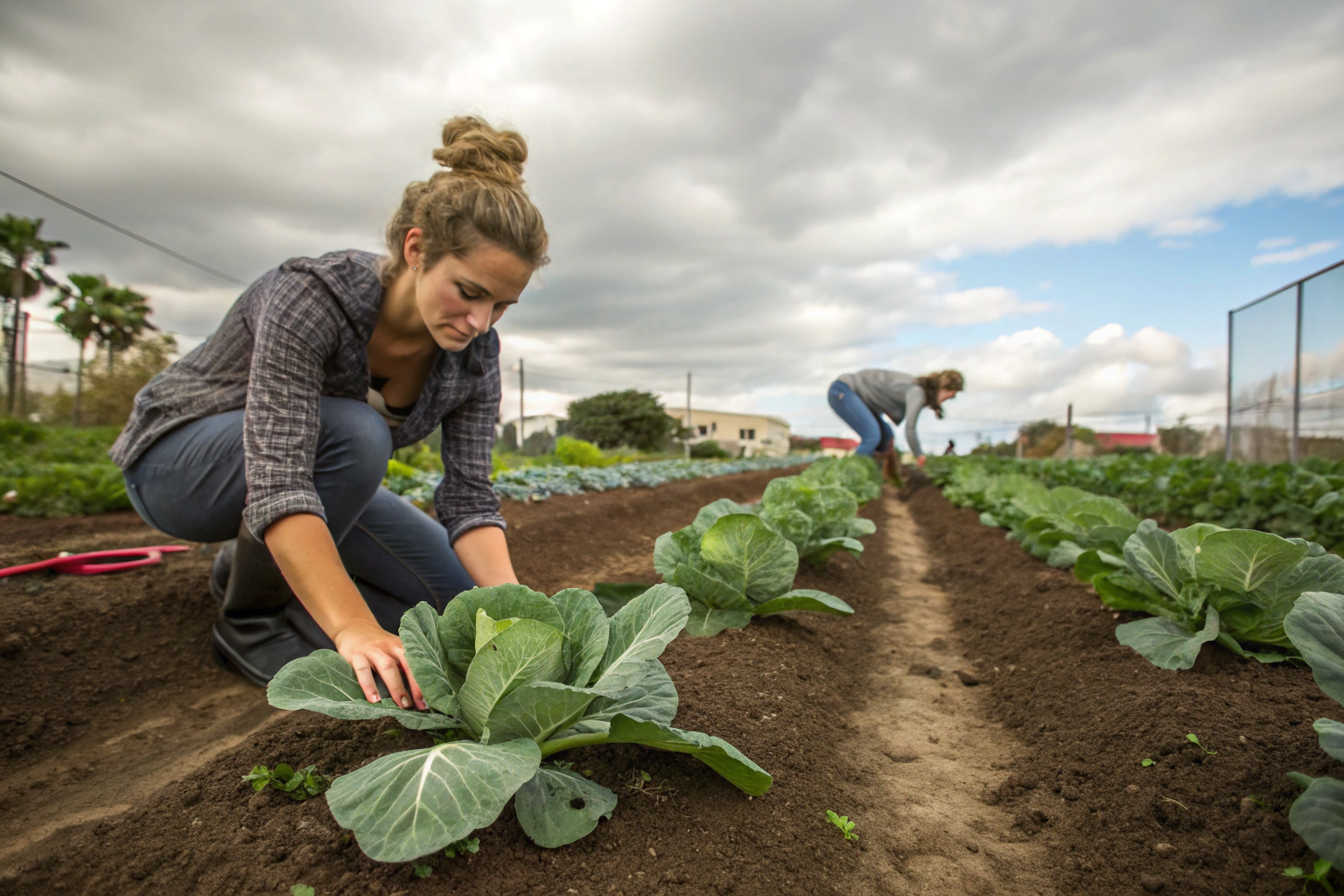Growing Cabbage: How to Plant, Care, and Harvest at Home

Growing Cabbage
Growing cabbage rewards patience, but good heads start with smart planting. Begin by sowing cabbage seeds indoors 6-8 weeks before your area's last frost date, transplant seedlings outdoors into nutrient-rich soil, and ensure plants receive at least 6 hours of direct sunlight daily. Keep watering consistent and pests at bay, and you'll soon slice into crisp, home-grown leaves—read on for savvy tips to master your cabbage patch.
I plant cabbage like I’m stocking a winter pantry, slow and steady, with a sharp knife ready for harvest day. The payoff tastes like a cold morning, sweet and crisp, with the faint bite that only brassicas deliver.
Climate, timing, and the rhythm of cool-season crops
Cabbage thrives in cool weather, happiest around 60 to 65 F (15 to 18 C), and it shrugs off light frosts once hardened. Spring crops go in 2 to 4 weeks before the last frost, and fall crops start 8 to 12 weeks before first frost for head-tight flavor.
Heat above 80 F (27 C) leads to loose heads, off flavors, and early bolting. I time fall plantings so heads tighten as nights hit the 40s F, which sweetens the leaves.
"Aim for consistent cool temperatures, 60 to 70 F, to form dense heads," notes multiple Extension guides, including Cornell and Minnesota.
Soil prep and pH for brassica health
I build a firm, fertile bed with 2 to 3 inches (5 to 7.5 cm) of compost, then rake it smooth to give roots grip. Target pH 6.5 to 6.8 to prevent clubroot and boost nutrient uptake, and lime if your soil skews acidic.
Cabbage is a heavy feeder, so I mix in a balanced organic fertilizer pre-plant, then top off with nitrogen later. Keep soil consistently moist to avoid stress and bitter notes.
"Maintain pH near neutral to reduce clubroot pressure," RHS and North Carolina State Extension advise.
Starting seeds and transplanting without stunting
Start seeds indoors 4 to 6 weeks before transplant, under bright light at 65 to 70 F (18 to 21 C). I pot up if roots fill the cells early, since cramped roots can cause buttoning, those tiny unusable heads.
Harden off for 7 to 10 days, then transplant to the first true leaves. Plant deep, water in with a kelp or fish solution, and cover with insect netting right away.
Spacing and bed layout that match your variety
- Compact early types: 12 to 15 in (30 to 38 cm) in-row, 18 to 24 in (45 to 60 cm) between rows.
- Main-season: 15 to 18 in (38 to 45 cm) in-row, 24 to 30 in (60 to 75 cm) between rows.
- Storage giants: 18 to 24 in (45 to 60 cm) in-row, 30 to 36 in (75 to 90 cm) between rows.
Close spacing gives smaller, quicker heads. Big winter drumheads need elbow room.
Water and feeding plan that builds dense heads
Deliver 1 to 1.5 inches of water weekly, about 0.62 gallons per square foot per inch, with mulch holding it steady. I side-dress with nitrogen at the cupping stage when inner leaves turn inward, then again 2 weeks later for main-season types.
Use a gentle hand after heads harden to reduce splitting, and skip feast-or-famine cycles. Even moisture builds tight, sweet leaves.
"Vegetables need about 1 to 1.5 inches of water per week," University of Minnesota Extension notes.
Pests and diseases: fast ID, simple controls
- Caterpillars: imported cabbageworm, cabbage looper, diamondback moth. Scout undersides for green frass and chew marks, handpick, and use Bt kurstaki or spinosad in the evening under a pollinator-safe plan.
- Flea beetles: tiny shot holes early on. Exclude with insect netting, and keep seedlings growing fast with steady water and nutrition.
- Aphids: sticky honeydew and curling leaves. Blast with water, release lady beetles if you like, and use insecticidal soap as needed.
- Cabbage maggot: roots riddled, plants wilt midday. Use netting from day one, and avoid spring plantings into fresh manure.
- Clubroot: swollen roots, stunted plants. Raise pH to 7.0 to 7.2 with lime, rotate 3 to 4 years away from brassicas, and improve drainage.
- Black rot and downy mildew: V-shaped lesions on leaf edges or gray-purple patches. Space for airflow, water early, and remove infected debris.
"Cabbage maggot injury is most severe in cool spring soils," UC IPM notes, which is why I net early plantings.
Heat, bolting, and splitting prevention
Vernalization is the cold exposure that triggers flowering in biennials, so avoid transplanting very young seedlings before a long cold spell. If a hot week arrives, shade cloth and extra water prevent loose heads.
To stop splits before a storm, I slice a spade into one side of the root zone or twist the stem slightly to slow water uptake. Another trick is harvesting mature heads on the early side, since flavor is already set.
Harvest, curing, and storage
Heads are ready when they feel like a full canteen, dense and tight with no flex. Cut the head with a clean knife, leave a few wrapper leaves, and remove any damaged outer layers.
For bonus minis, leave the stump and four outer leaves, then harvest secondary heads a few weeks later. Store heads at 32 F (0 C) and 95 percent relative humidity, unwashed, for 1 to 6 months depending on variety.
Best cabbage varieties by goal
- Earliest heads, sweet and tender: ‘Farao’, ‘Tiara’, ‘Gonzales’ mini. I use these for slaws and quick sautés.
- Main-season reliability: ‘Cheers’, ‘Tendersweet’, ‘Caraflex’ conehead with razor-shreddable leaves.
- Red types with color that holds: ‘Red Express’ for earlies, ‘Ruby Perfection’ for storage, both tight and slice clean.
- Savoy texture and winter depth: ‘Deadon’, ‘January King’, ruffled and cold tolerant, great after frost.
- Sauerkraut and slaw yield: ‘Kaitlin’, ‘Krautman’, ‘Brunswick’, high dry matter and uniform shreds.
- Heat-tolerant for shoulder seasons: ‘Stonehead’, ‘Tropic Giant’, chosen for wider temperature windows.
- Containers and small beds: ‘Piccolima’, ‘Primo Vantage’, compact cores and tidy plants.
Seed houses I trust include Johnny’s Selected Seeds, High Mowing, Territorial, and Bejo for dependable genetics. I trial two or three side by side every season and keep notes on head weight, days to maturity, and flavor after frost.
Containers, raised beds, and tight spaces
One plant per 7 to 10 gallon container with rich mix and steady water works beautifully. In raised beds, I tuck dill, calendula, or alyssum in the corners to feed hoverflies that hunt aphids.
Use insect netting with a fine mesh to block moths and beetles. Secure the edges, since caterpillars only need one invitation.
Companion planting and rotation that matter
I rotate away from brassicas for 3 to 4 years, slotting in legumes or alliums to break disease cycles. Avoid following turnip, radish, mustard, kale, or broccoli with cabbage.
Nasturtiums lure aphids, and onions confuse moth flightlines, but the real win is netting and clean timing. Healthy, fast growth outruns much of the trouble.
Fertilizer schedule, simplified
- Pre-plant: compost plus a balanced organic fertilizer, targeting 0.5 to 1 inch of finished compost over the bed.
- At cupping: side-dress each plant with a nitrogen source, like a small handful of feather meal or diluted fish emulsion.
- Mid-bulking: repeat nitrogen only if leaves pale and growth stalls, and stop once the head firms.
Yellow lower leaves with green veins signal magnesium hunger, so a touch of Epsom salt as a soil drench can help. Keep pH in range before chasing fixes with salts.
Field notes from seasons that taught me things
A freak thunderstorm once split half my fall heads, so now I prop a board under one edge of the root ball or cut a shallow spade slice before heavy rain. Another year I skipped insect netting in spring and watched cabbageworms write their names in lace across the leaves, lesson learned.
The best heads I ever cut came after a week of cold nights around 34 to 38 F (1 to 3 C). The sugars sharpened, and the slaw needed nothing but salt and a squeeze of lemon.
Quick buyer’s guide
- Row cover or insect netting, 0.8 mm or finer mesh, plus sandbags or pins to seal edges.
- Soil test kit and garden lime to hold pH near 6.5 to 6.8, or up to 7.2 in clubroot hot spots.
- Balanced organic fertilizer and a reliable nitrogen top-dress for cupping time.
- Sharp harvest knife and breathable produce bags for cold storage.
I pick seed from reputable suppliers that publish days to maturity, head weight, and disease notes. Good cabbage starts on the seed packet, and finishes with a clean cut on a cold morning.
FAQ on Growing Cabbage, straight answers
How long from seed to harvest, 60 to 100 days depending on variety and season. Why do heads stay small, stress from crowding, poor nitrogen, early heat, or cold-shock can trigger buttoning.
Can I regrow after cutting, yes, leave the stump and you’ll often get 3 to 5 small heads. Can I overwinter, in mild climates I mulch heavily, net the bed, and pick as needed until hard freezes.
Cheatsheet: Homegrown Cabbage Made Simple
🌱 Choose the Spot & Prep Soil
Full sun, 6-8 hours daily. pH 6.5–6.8. Add compost for richer heads. Rotate location yearly to avoid soil disease.
🌡️ Sow or Transplant
- Start seeds indoors 6-8 weeks before last frost (spring), or direct sow outdoors after frost passes.
- Optimal germination: 65-75°F / 18-24°C.
- Transplant when seedlings have 3-4 leaves. Space heads 12-24 in / 30-60 cm apart.
💧 Water & Feed
- Keep soil consistently moist.
- Mulch to retain water and stop weeds.
- Feed with balanced fertilizer every 3 weeks.
🐛 Defend Against Pests
- Inspect leaves for cabbage worms, aphids, and slugs.
- Hand-pick pests or use row covers and organic sprays.
⏳ Harvest Like a Pro
- Ready in 70-100 days, heads firm and dense.
- Cut head at base with a sharp knife; leave roots for regrowth.
🛠️ Tools and Products You'll Need
- Trowel
- Watering can or hose
- Hoe or hand weeder
- Row cover (for pests/frost)
- Balanced vegetable fertilizer
- Mulch (straw or leaves)
- Sharp knife (for harvest)
- Seeds or young cabbage plants
🥗 Why Grow Cabbage?
1 cup = 85% daily vitamin K, 54% vitamin C. High fiber, immune support, long shelf life. Boosts food security and nutrition at home.
Frequently Asked Questions on Growing Cabbage Successfully
When is the ideal time to plant cabbage seedlings?
Plant your cabbage seedlings in early spring or late summer, aiming for soil temperatures around 60°F (16°C). Warmer climates benefit from late-summer planting, while cooler regions accommodate early spring planting best.
What soil conditions best support cabbage growth?
Cabbage thrives in fertile, well-draining soil rich in organic matter. Aim for a slightly acidic to neutral soil pH of 6.0 to 7.0. Regular compost additions help maintain ideal nutrient levels.
How much sun exposure do cabbage plants require?
Cabbage plants require full sun, which means at least six to eight hours of direct sunlight each day. Optimal sunlight promotes vigorous growth and healthy head formation.
What is the recommended watering schedule for cabbage?
Keep the soil consistently moist, providing about 1 to 1.5 inches (2.5 to 4 cm) of water weekly. Soak deeply when watering to encourage sturdy root development and prevent shallow roots.
Which companion plants improve cabbage health and growth?
Plant cabbage alongside beneficial companions such as marigolds, onions, garlic, dill, and sage. These plants deter common pests and diseases, contributing naturally to healthier crops.
How can cabbage pests and diseases be controlled organically?
Employ organic control measures such as applying row covers to prevent pest access and cultivating beneficial insects like ladybirds and lacewings. Regular crop rotation effectively reduces disease incidence.
What signals cabbage is ready for harvest?
Harvest cabbage heads once firm and tightly formed, typically within 70–90 days after planting, depending on variety. Cut heads at the base using a sharp knife, leaving outer leaves on the plant to encourage smaller secondary heads.
How should cabbage be stored after harvesting?
For maximum freshness, refrigerate harvested cabbage heads immediately at temperatures around 32 to 40°F (0 to 4°C) and high humidity. Properly stored cabbage typically retains quality for several weeks.
Growing cabbage isn’t about chasing perfection—it’s about patience, good soil, and a sharp eye for pests. Feed your plants, water deeply, and watch for cabbage worms. Give them room, and they’ll reward you with crisp, sweet heads that beat anything from the store. Rotate crops, toss mulch around their roots, and harvest before the heat sets in. If you’re hungry for more leafy harvests, kale and radicchio make worthy companions in any cool-season bed. At the end of the day, growing cabbage is simple: respect the plant, keep the soil rich, and don’t let the bugs win. The rest will take care of itself.




